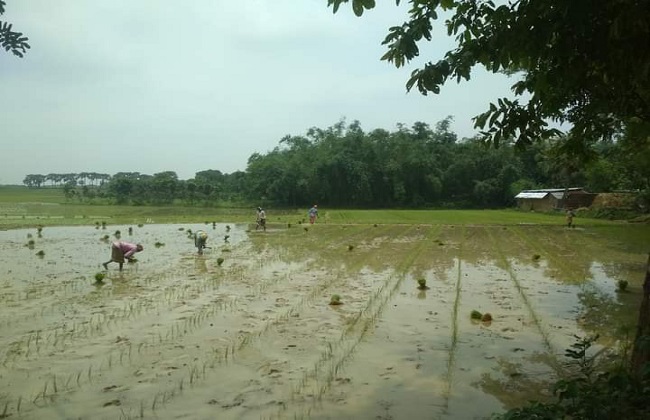
Over 6.76 lakh tonnes of Aush rice is expected to be produced from 2.23 lakh hectares of land in the division during the current season.
Target has been set to produce 5.38 lakh tonnes of rice from 1.71 lakh hectares of land in Rajshahi, Naogaon, Chapainawabganj and Natore districts under Rajshahi agricultural zone while another 1.48 lakh tonnes from 51,105 hectares in Bogura, Joypurhat, Pabna and Sirajgonj districts under Bogura agricultural zone.
Target has also been set to grow seedlings on 11,254 hectares of land to make the transplantation process a total success.
In many areas, the farmers have started transplanting Aush paddy in limited scale and the advanced varieties in particular.
Khayer Uddin Mollah, Zonal Deputy Director of the Department of Agriculture Extension (DAE), said a total of 90,600 small and marginal farmers received seed and fertilizers as incentives worth around Taka 7.08 crore for the cultivation of Aush paddy in the current Kharif-1 season in the division.
The beneficiary farmers were given five kilograms of high yielding seed, 20 kilograms of diammonium phosphate and 10 kilograms of potash fertilizers for aush paddy cultivation on one bigha of land each free of cost under the government’s agricultural incentive programme.
Zonab Ali, 35, a farmer of Rajabari village under Godagari Upazila, received the incentives expressing his gratitude to the government for standing beside them. Another marginal farmer Abdus Sabur, 47, of Fulbari village is now happy after getting the incentives.
“We have already completed the incentive distribution activities in Godagari Upazila,” said Atanu Sarker, Sub Assistant Agriculture Officer.
Agriculturist Khayer Mollah said the agricultural incentives will help boost aush paddy production as the country’s total production will be enhanced while the government has attached highest priority to the agriculture sector to cope with the present pandemic situation.
He said the aush farming is very much cost effective as it requires less production cost and faces less natural calamity.
On the other hand, some new paddy varieties released by Bangladesh Rice Research Institute (BRRI) have been playing a vital role in boosting aush rice through mitigating the crises of irrigation water in the division.
BRRI Principal Scientific Officer Dr Fazlul Islam said some of the new varieties including the BRRIdhan-48 have gained popularity among farmers in the Barind tract during the last couple of years.
BRRIdhan-48, a short duration and drought tolerant paddy variety has been giving satisfactory yield with scanty rainfall and limited irrigation in the area.
The variety features early harvesting characteristics, supplementing the farming of transplanted Aman and various Rabi crops like tomato, brinjal, mustard and vegetables as the region is conventionally famous for farming these crops abundantly.
The farmers are seen being interested in cultivating the newly developed variety in the vast Barind tract as part of their effort to adapt with the adverse impacts of climate change.
Dr Islam said there has been an enormous prospect of increasing food production through a successful promotion of the developed varieties.
To maintain sound soil health, it could be advisable to grow rice using a different system in order to improve compatibility between monsoon rice and upland winter crops.
Simultaneously, the DAE has set the target of bringing 62,003 hectares of land under the farming of direct seeded aman rice in the flood-prone and wetland areas and the seed sowing is going on in the division at present.
The direct seeded farming process reduces 45 to 50 percent production cost than the conventional system, sources said.
In the previous season, farmers have harvested around 6.07 lakh tonnes of Aush rice from around 2.03 lakh hectares of land in the division.

